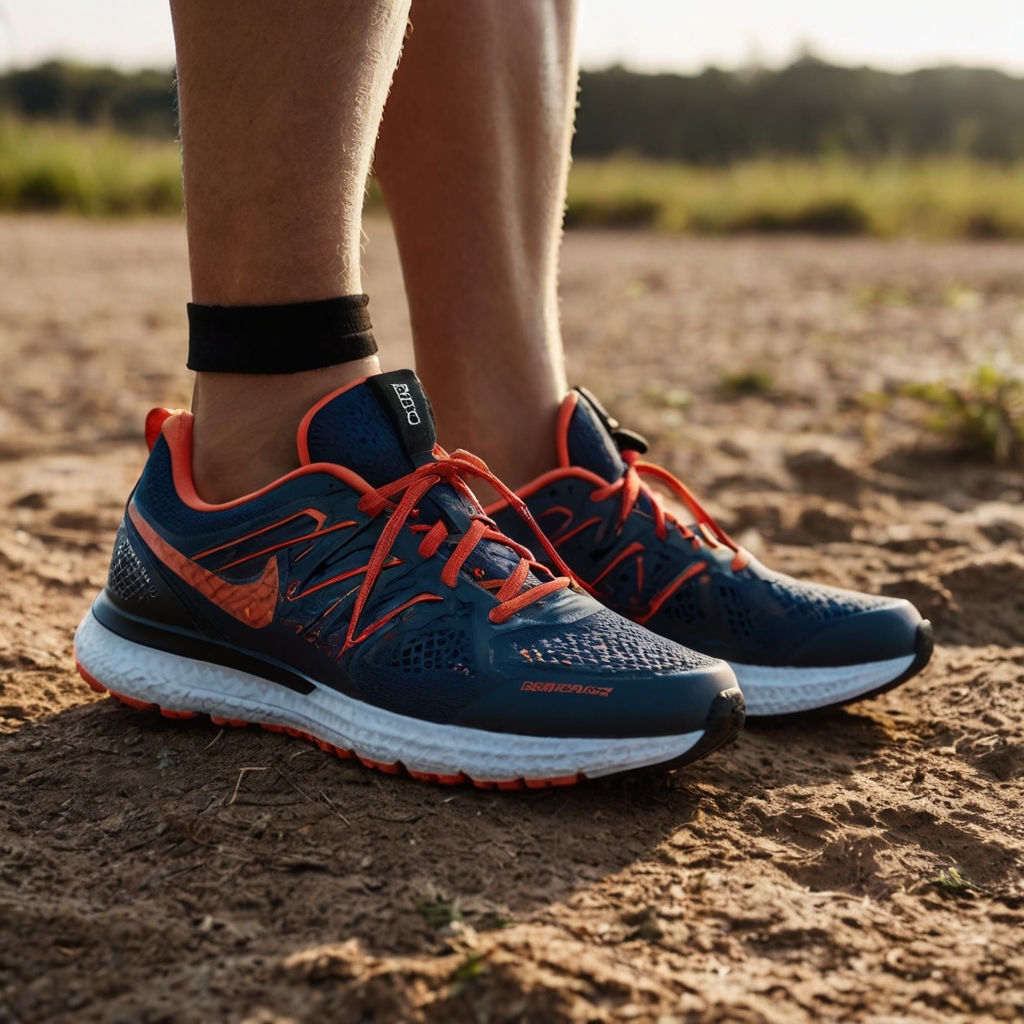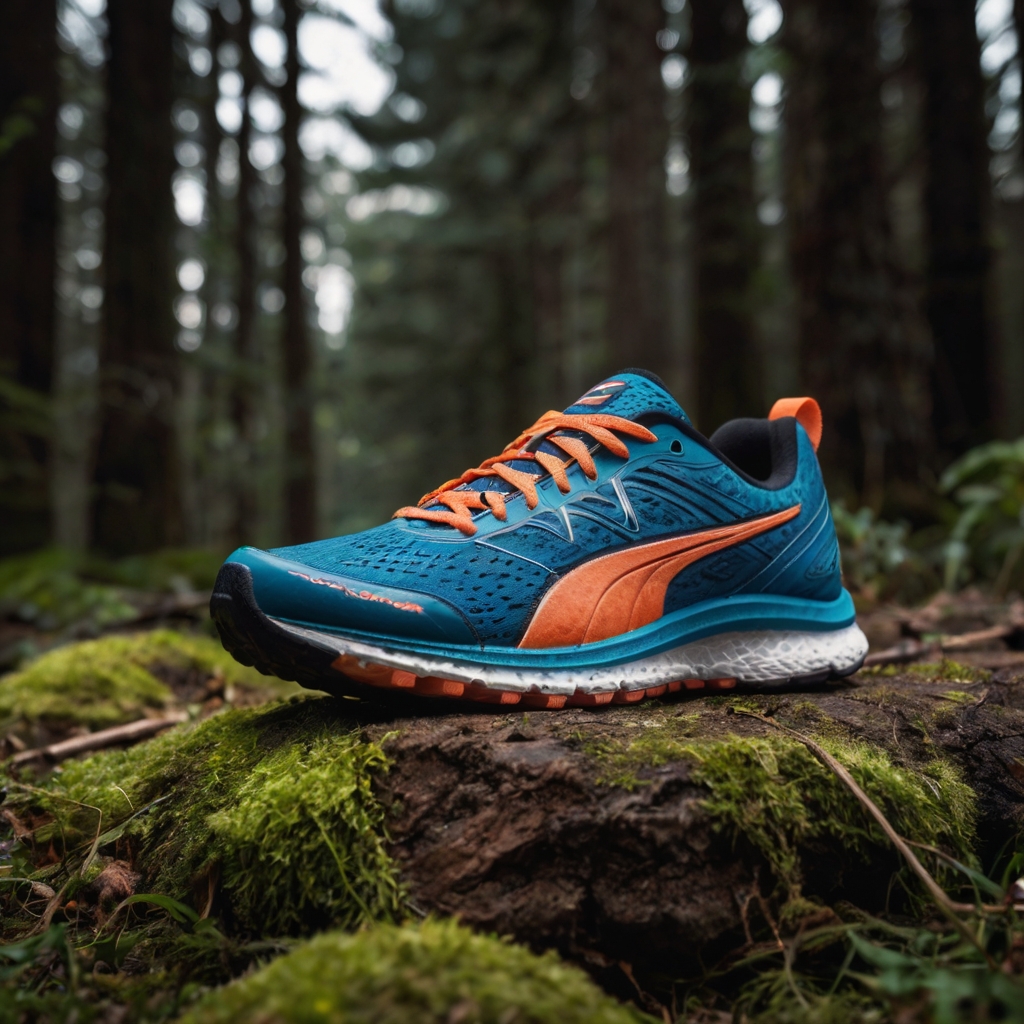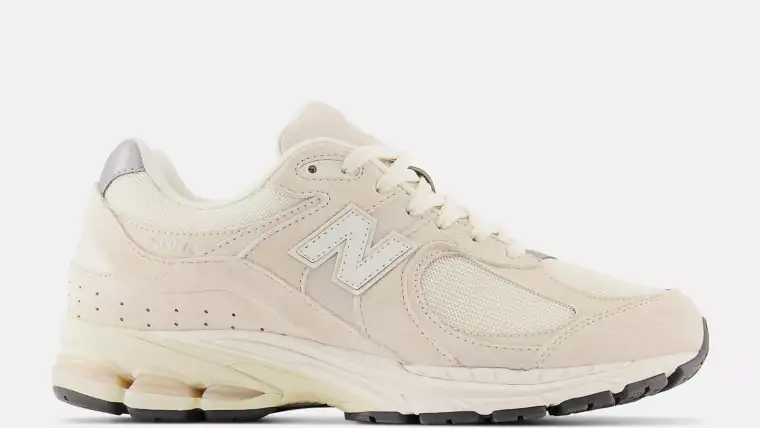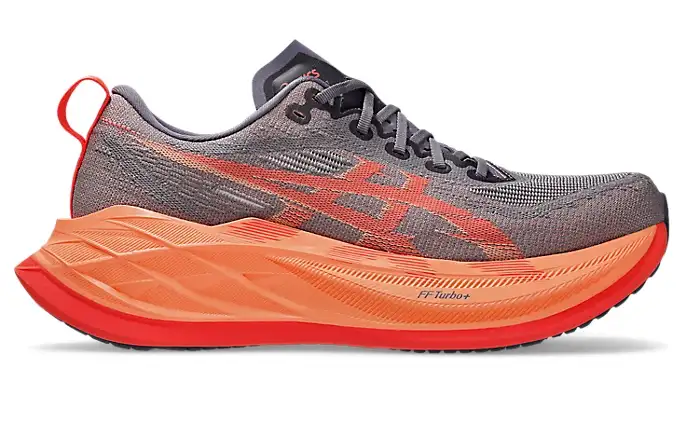Stability running shoes have come a long way. They now feature innovative support systems that help runners who overpronate. The stability footwear market has gotten smaller, but many runners still need guidance features in their shoes to stay injury-free and maintain good form.
Runners who overpronate can find some impressive options with cutting-edge technology in today’s market. The Asics Gel-Kayano 31 stands out with its “adaptive stability” that kicks in only when needed. This creates a more natural feel despite its substantial 40mm stack height. The Brooks Glycerin GTS 22 delivers excellent dynamic stability through its 38mm stack and 10mm drop. This makes it perfect for runners dealing with moderate to severe overpronation. The Brooks Hyperion GTS 2 proves that stability shoes don’t have to be bulky anymore. It weighs just 7.6oz for men and 6.9oz for women.
This detailed guide gets into the top stability running shoes of 2025. You’ll find the perfect mix of support, cushioning, and performance to keep your miles pain-free.

Table of Contents
- 1 What Are Stability Running Shoes and Who Needs Them?
- 2 Top Stability Running Shoes of 2025
- 3 How to Choose the Right Stability Shoe for You
- 4 Key Features That Define a Good Stability Shoe
- 5 Expert Testing and What We Learned
- 6 Finding Your Perfect Stability Companion
- 7 Here are some FAQs about the best stability running shoes:
- 7.1 What is the best stability running shoe?
- 7.2 Do overpronators really need stability shoes?
- 7.3 What is the most stable super running shoe?
- 7.4 What type of runner needs a stability shoe?
- 7.5 Are HOKA or Asics better for overpronation?
- 7.6 Do I actually need stability shoes?
- 7.7 Does Hoka make a stability shoe?
- 7.8 Why is overpronation bad?
- 7.9 Is the Asics Gel Kayano a stability shoe?
What Are Stability Running Shoes and Who Needs Them?
Stability running shoes are a special type of athletic footwear that gives structural support to runners with specific needs. Most stores group shoes as “neutral or stability,” but modern stability tech covers a range of supportive features that match different running styles and foot types.
Understanding overpronation and flat feet
A runner’s foot rolls too much inward after hitting the ground during overpronation. This inward roll can flatten the arches and puts too much stress on the foot’s inside. Your feet need some pronation to absorb shock, but too much can lead to overuse injuries like Achilles tendinitis, shin splints, iliotibial band syndrome, and runner’s knee.
Many runners think flat feet mean they must wear stability shoes. But arch height alone doesn’t tell the whole story about pronation. “There is evidence that suggests prescribing arch support based on arch height is not valid or helpful,” according to research. Some people have lower arches with good foot strength. Others have flat arches with rigid foot structures. Looking at how feet move during running tells us more than just checking foot shape.
Your current running shoes can show signs of overpronation. The inside of your soles might wear down faster than the outside if you overpronate. You might also notice recurring issues like plantar fasciitis, bunions, heel pain, or knee discomfort.
How stability shoes help prevent injuries
Stability shoes control excess foot motion during running. They use several design features:
- Medial posts – Firmer foam on the inner (medial) side to resist excessive inward rolling
- Guide rails or sidewalls – Structural elements that help maintain proper foot alignment
- Dual-density midsoles – Varying foam firmness to provide targeted support
- Reinforced heel counters – Structured heel areas that enhance stability
Research shows real benefits for people who need stability footwear. A randomized clinical trial showed that runners with pronated feet had 66% fewer injuries with motion-control shoes (HR = 0.34; 95% CI = 0.13, 0.84). Most runners can benefit from added stability features on long runs when muscles get tired.
A military training study found that shoes correcting overpronation cut all running injuries by 9.1%. The rate of shin splints dropped from 6.8 to 2.8 per 1,000 participants.
Neutral vs. stability vs. motion control
Running shoes come in three main categories on the stability spectrum:
- Neutral shoes work best for runners with normal pronation patterns. These lightweight, flexible shoes allow natural foot movement and provide balanced cushioning.
- Stability shoes hit the sweet spot between neutral and motion control. They give moderate support for mild to moderate overpronators. Modern versions are less restrictive but still supportive, using features like guide rails, medial posts, or reinforced midsoles.
- Motion control shoes offer maximum support for severe overpronation or completely flat feet. They use rigid support systems, strong medial posts, and lots of structure to limit foot motion. These shoes are “designed to prevent the shoe from wearing out unevenly”.
Shoe companies now make fewer motion control models and focus on adaptable stability designs. Physical therapist Jay Dicharry puts it well: “The more we can stop using words like stopping and limiting and controlling when it comes to running shoes, the better off we’ll be”.
The best way to find the right shoes is through professional gait analysis at a running store or with a sports medicine expert. This works better than choosing shoes based just on arch type or foot shape.

Top Stability Running Shoes of 2025
We analyzed dozens of models to bring you the best stability running shoes of 2025. These shoes stand out with targeted support and comfort that helps overpronators maintain proper form during runs.
1. Best Overall: Asics Gel-Kayano 31
The Asics Gel-Kayano 31 builds on its two-decade legacy as the gold standard for stability running shoes. A major redesign last year refined the classic formula while keeping its defining quality: exceptional running comfort. The shoe comes with “adaptive stability” that activates support only when needed. This creates a more natural running experience. The Kayano 31 uses softer, bouncier foam at midfoot instead of rigid medial posts to guide your foot into position after landing.
The shoe delivers unmatched cushioning with its 40mm stack height and PureGel in the heel. A streamlined mesh upper and firm yet comfortable heel counter guide your foot through each stride. The only drawback: some testers found the mesh upper runs warm.
2. Best for Long Runs: Brooks Glycerin GTS 22
Brooks Glycerin GTS 22 shines on long runs with its nitrogen-infused DNA Tuned cushioning. The shoe optimizes plush landings and responsive toe-offs. Dual-size cell technology creates a balanced and stable ride that works great for longer distances.
This premium stability trainer uses the brand’s innovative GuideRails support system. The system reduces excess motion while keeping your stride natural. A 10mm drop and 39mm heel stack provide enough protection for high-mileage training. Testers gave it high marks – 9.0/10 for both comfort and durability.
3. Best Lightweight Option: Brooks Hyperion GTS 2
Brooks Hyperion GTS 2 proves stability shoes don’t need to be heavy. The shoe weighs just 7.6 ounces for men’s size 9. Brooks’ GuideRails technology maintains your natural motion path and controls excess movement while keeping the shoe lightweight.
The new Nitrogen-infused DNA FLASH v2 cushioning responds 10% better than before. This returns more energy and makes faster running feel natural. Adding 4mm more cushioning underfoot from the previous version balances protection and responsiveness. The Hyperion GTS 2 works best as a speed-focused training companion for short to moderate distance workouts.
4. Best for Speed: Saucony Tempus 2
Saucony Tempus 2 combines superfoam efficiency with an adaptive guidance system. This makes it perfect for faster-paced runs. The shoe’s asymmetrical design provides medial support at high speeds. A PWRRUN supportive frame guides your foot forward smoothly.
PWRRUN PB superfoam cushioning sets the Tempus 2 apart. The shoe delivers exceptional energy return without losing stability. Testers loved its performance during speed workouts. One said: “I really liked the firm and light foam underfoot. It really made the shoe seem like a faster, tempo-like shoe”. The 8mm drop (33mm heel/25mm forefoot) and 9.4oz (269g) weight balance cushioning and responsiveness perfectly for tempo runs and longer races.
5. Best for Recovery: Hoka Gaviota 5
Hoka Gaviota 5 features revolutionary stabilizing H-Frame technology. This allows softer foams than ever before in a stability shoe. The construction delivers inherent stability and maintains cushioning. A breathable creel jacquard upper and ultra-plush collar complete the package.
The Gaviota 5 matches Bondi-level cushioning that protects tired legs on recovery days. Testers liked its firm but well-protected feel, especially with recovering legs. One tester shared, “In the past, Hoka shoes that I had worn were too cushy for me… but this one I found to be firmer and very, very comfortable”.
6. Best for Daily Training: New Balance 860v14
New Balance Fresh Foam X 860v14 serves as a reliable everyday workhorse. The shoe takes inspiration from the Fresh Foam X Vongo v6. An EVA stability plate replaces a rigid medial post for better flexibility without losing support. The dual-density Fresh Foam midsole creates a balanced ride perfect for daily training.
Version 14 adds 4mm of padding in the forefoot. Two layers – soft on top for comfort and firmer below for stability – create what experts call “a touch more forgiving” without feeling “squishy-soft”. The 860v14 excels at consistent daily mileage but performs best at easier paces rather than speed work.
How to Choose the Right Stability Shoe for You
Finding the right stability running shoe means understanding your body’s mechanics and priorities. The perfect shoe depends on several factors that affect your running experience, not just what’s trending in top-rated models.
Check your pronation type
Your foot’s strike and roll pattern while running sets the foundation. Research shows 70% of runners overpronate, making it the most common pronation type. The wear patterns on your current shoes tell a story – concentrated wear along the inside edge points to overpronation, while outer edge wear suggests supination. A simple “wet foot test” reveals your arch type – just wet your foot and step on paper. A professional gait analysis at a specialty running store gives you the most accurate results.
Think over your running goals
Running objectives shape your stability needs. We focused on slower and longer efforts that need more stability since your body gets tired and lands harder. Quick workouts with brief ground contact need less stability. Using different shoes with varying stability levels creates a beneficial cross-training effect and might lower injury risk.
Match cushioning to your priorities
Support and comfort go hand in hand when picking stability shoes. Your shoes’ “ride” depends on foam firmness and thickness. Some runners love plush cushioning for extra comfort, while others want less cushioning to feel more responsive. Modern stability shoes blend soft foams with supportive elements to give you both comfort and correction.
Look at drop and stack height
Stack height measures the material between your foot and the ground. Drop shows the height difference between heel and toe. These measurements affect your foot strike by a lot. Higher drops (8-12mm) work better for heel strikers, while lower drops suit midfoot strikers better. Overpronators benefit from straighter-lasted shoes with filled-in arches that boost stability.
Fit and comfort matter most
The right fit should drive your final choice. Leave a thumb’s width between your toe and shoe end, with a snug midfoot and heel. Try shoes late in the day when your feet are largest. Wear your running socks and take them for a quick test run before buying. Sizes differ between brands, so getting measured beats guessing your size.
Fit, comfort, and style don’t have to conflict. Personalize your running gear with Custom PVC Patches—whether it’s your name, an inspirational slogan, or your favorite fitness symbol.
Key Features That Define a Good Stability Shoe
Modern stability running shoes pack several technical features that work together to stop your feet from moving too much. Runners who understand these parts can pick the right shoes that match their needs.
Guide rails and sidewalls
Guide rails show the progress from old stability features and offer a comprehensive solution compared to stiff medial posts. Brooks’ GuideRails support system uses two firm foam pieces on both sides of the heel to reduce shin and heel rotation. This design keeps your knee motion within a safe range and lets your body move naturally by stopping extra movement. Altra’s Paradigm model uses sidewalls that rise from the midsole to add structure and stop foot wobbling. These systems work just like bumpers that guide your feet back to the right position instead of forcing them into fixed spots.
Dual-density midsoles
Dual-density midsoles blend two different foam materials to give targeted support. A soft layer cushions your foot while a firmer layer adds stability. This smart design works great for mild overpronation without making you uncomfortable. Hoka’s J-frame technology and Saucony’s method place firmer foam on the inner side to stop your foot from rolling inward too much. These designs spread pressure evenly across your foot and help you run longer without getting tired.
Heel counters and arch support
Heel counters are U-shaped parts that wrap around your heel to keep your foot in place. They stop your heel from slipping even when you run uphill. Firm, high arch support helps prevent your arch from collapsing inward, which is vital for overpronators. Both features keep your foot aligned properly throughout your stride.
Outsole geometry and width
The width and shape of your shoe’s base directly affect how stable it feels. A wider platform makes landings more secure, and full-ground contact outsoles give you better stability. Good outsole designs need features that let you run safely, often using wider bases or extra parts. When the midsole extends past the upper, it creates a broader platform that boosts stability without using rigid control parts.
Expert Testing and What We Learned
Scientific testing methods show how stability running shoes actually perform compared to what manufacturers claim. Our complete evaluation combines exact lab measurements with ground running experiences to find the best models for overpronators.
Lab testing vs. ground runs
Each stability running shoe goes through both mechanical tests and practical evaluation to maintain objectivity. Scientists cut shoes in half to measure over 20 different parameters. This lets them analyze heel and forefoot stack heights, calculate heel drop, and measure midsole softness with precision. The shoes also go through temperature tests. They stay in freezers for 20 minutes to simulate winter conditions and check how cold affects their flexibility and cushioning.
The ground testing has multiple runners putting many miles on each model. Our testers run at least 100 miles over a month and give detailed feedback. Some stability shoes get even more thorough testing with testers running between 30-50 miles per shoe. This two-way approach makes sure lab results match actual running experiences.
Feedback from overpronators
Runners who actually overpronate are a great way to get insights about stability running shoes. Our testing team has runners with low arches and excessive inward foot rolling. These testers give vital information about how each shoe’s stability features work during different workouts and distances.
A runner with overpronation said the Brooks Launch GTS 10 gave “the right amount of support and stability to keep my feet feeling secure” while staying “flexible enough to run naturally”. Another tester found the guidance system worked like “a friendly nudge to maintain my stride in line”.
What surprised us in 2025 models
The 2025 stability shoe lineup brought unexpected changes. Softer foams that didn’t compromise stability marked the biggest advancement. Stability shoes needed firmer cushioning before, but new technologies like Hoka’s H-Frame now allow softer, more comfortable midsoles.
The 2025 models also weighed less without losing support. The Brooks Hyperion GTS 2 proved this by giving effective stability in a lightweight package. The move from traditional medial posts to adaptive guidance systems like Brooks’ GuideRails and Hoka’s J-Frame showed how stability technology keeps evolving toward customized support that works only when needed.
Finding Your Perfect Stability Companion
Your ideal stability running shoe depends on understanding your unique needs as a runner. What was once a bulky, rigid category has changed into a versatile collection of shoes that provide support without sacrificing comfort or performance.
Stability shoes should improve your running instead of restricting it. The 2025 lineup shows remarkable progress with options ranging from the ultra-cushioned Asics Gel-Kayano 31 to the surprisingly lightweight Brooks Hyperion GTS 2. Overpronators can now enjoy their runs with proper support.
Research shows that wearing the right stability footwear reduces injury risk by a lot for runners who need it. Time spent on assessing your pronation pattern through professional gait analysis or checking wear patterns on existing shoes pays off for your long-term running health.
Modern stability shoes work with your body rather than against it. Guide rails, adaptive cushioning, and thoughtful outsole geometry correct only when needed and allow for a more natural stride. This change from rigid control to dynamic support marks the biggest advancement in stability shoe design.
Whatever support you need – substantial guidance or subtle correction – the 2025 stability running shoe market has solutions tailored to different priorities and running styles. Stability no longer means compromise. Today’s options deliver both protection and performance for pain-free miles ahead.
Here are some FAQs about the best stability running shoes:
What is the best stability running shoe?
The best stability running shoe depends on your foot type, running style, and comfort preferences, but some consistently top-rated options include the Asics Gel-Kayano, Brooks Adrenaline GTS, and HOKA Arahi. These are often recommended as the best stability running shoes for overpronators because they offer structured support and cushioning. If you’re in the UK, models like these are also listed among the best stability running shoes UK runners swear by.
Do overpronators really need stability shoes?
Yes, overpronators typically benefit from stability shoes because they help correct excessive inward rolling of the foot during each stride. Without this support, overpronators are at greater risk for injuries like shin splints, IT band syndrome, and plantar fasciitis. That’s why finding the best stability running shoes is crucial for both performance and injury prevention.
What is the most stable super running shoe?
The most stable super running shoe would be a model that combines advanced cushioning with some level of corrective support, such as the Asics Kayano Lite or the Saucony Tempus. These shoes are often mentioned in lists of the best stability running shoes for overpronators because they provide a blend of responsiveness and structured guidance. Runners who want super foam technology with added stability often favor these hybrid designs.
What type of runner needs a stability shoe?
Runners who overpronate or have flat to low arches typically need a stability shoe. These shoes help guide the foot into a more neutral position, reducing strain on joints and muscles. That’s why the best running shoes for stability are essential for people who deal with gait-related injuries or chronic discomfort during or after runs.
Are HOKA or Asics better for overpronation?
Both HOKA and Asics make excellent shoes for overpronators, but the choice depends on individual preferences. Asics models like the Gel-Kayano are among the best stability running shoes for women and men due to their proven support features. HOKA’s options like the Arahi and Gaviota offer more cushioning with moderate guidance, which some runners prefer for long distances.
Do I actually need stability shoes?
If you have a history of injury, overpronation, or flat feet, then yes, you likely need stability shoes. The best stability running shoes help realign your stride and prevent common issues linked to poor foot mechanics. If you’re unsure, a gait analysis or professional fitting can help determine whether the best stability running shoes for overpronators are right for you.
Does Hoka make a stability shoe?
Yes, HOKA offers several models designed specifically for stability, including the Arahi and Gaviota. These shoes use features like J-Frame technology to provide structured support without being overly rigid. Many runners looking for the best stability running shoes in the UK and worldwide consider these a great choice, especially if they prefer a plush ride.
Why is overpronation bad?
Overpronation can lead to improper alignment, placing excess stress on your ankles, knees, and hips. This repetitive strain can result in chronic injuries, especially for regular runners. That’s why using the best stability running shoes for overpronators is important for reducing injury risk and improving overall comfort.
Is the Asics Gel Kayano a stability shoe?
Yes, the Asics Gel Kayano is one of the most well-known and trusted stability shoes on the market. It offers a mix of cushioning and support that makes it ideal for overpronators. Whether you’re searching for the best stability running shoes women love or a unisex option, the Kayano continues to be a top pick globally.


